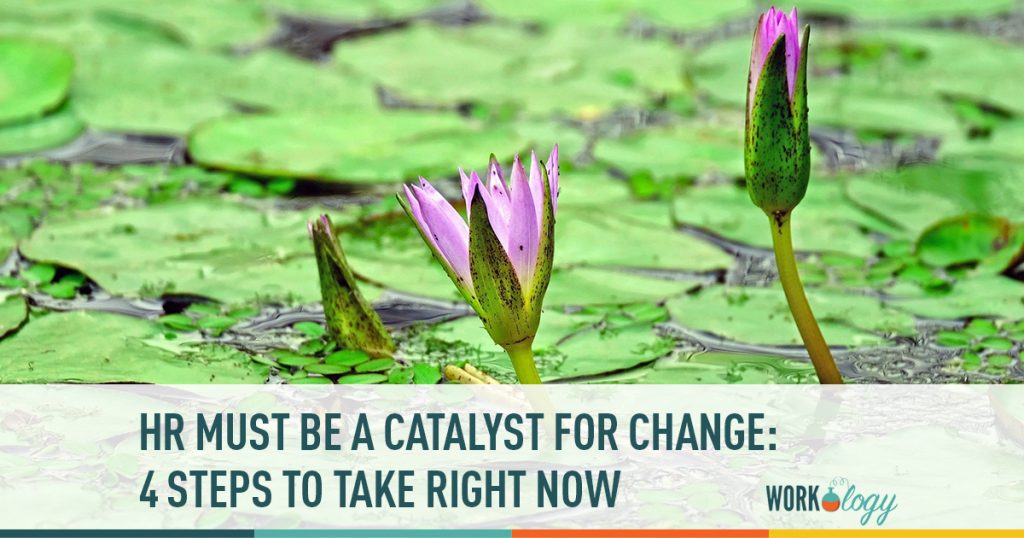Mahatma Ghandi said, “Be the change you wish to see in the world.”
As our worlds and the people in it adjust, organizations must, too. HR professionals are in a great position to be a catalyst for change in our workplaces.
HR Must Be a Catalyst for Change
Right now, our world is becoming increasingly fluid, as Cecile Alper-Leroux mentions in her blog post Going with the Flow. HR is in the driver’s seat as workforces experience both an increase in worker confidence and more fluid people. A noticeable increase in employee quit rates may be due to these changes, and it is more important than ever for HR to make adjustments based on societal changes to attract and retain the best people.
1. Changing Outdated Policies
If HR doesn’t create policies and practices that are as fluid as the people in their organizations (or the people they want in their organizations), then it’s unlikely employees will bring their best, most productive, happy, and “authentic” selves to work. And establishing these policies often begins with recruiting. As a millennial who recently underwent the end-of-college job search, I noticed that many current policies and practices tried to fit applicants, employees, job descriptions, and benefits into categories that might not support the entire population or consider extenuating circumstances.
2. Getting Job Descriptions Right
As an additional concern, improperly written job descriptions can severely limit both the scope of the role and those interested in applying for it. According to Human Resources expert Susan Heathfield, poorly constructed descriptions can “put people back into the organization chart boxes [HR has] been asking them to break out of for years by damaging speed, flexibility, and forward motion.” By removing barriers in job descriptions, organizations can communicate current responsibilities and skillsets while allowing employees to grow.
3. Thinking Differently About Candidates
Also consider that according to The Atlantic and an 18-month-long Ernst & Young study, organizations are missing out on fantastic candidates who have the skills but may not have the required experiences (like college degrees). Applications and jobs that require degrees may discourage top candidates from applying even though they may be perfect for the job and organizations. EY instead recommends pre-employment tests to determine whether a candidate has the demanded skillset.
4. Giving Employees the Perks and Benefits They Want
Finally, it’s important to review whether company benefits are in line with the organization’s desired culture. US New and World Report shares mutually-beneficial, future-oriented benefits that both current and future employees and organizations can employ. Telecommuting and telephone doctor visits are two benefits that are becoming increasingly popular among many organizations.
People are no longer easily definable. They are an amalgam of identities, personalities, experiences, educations, thoughts, ideas, feelings, and more. HR professionals are in a powerful position to help organizations succeed not only in the present, but also in the future. This means taking care of their employees – and not just the ones that fit into preconceived boxes. It means ensuring people have the tools they need to succeed both at work and at home. (Yes, at home. Did you check your work email when you got home last night?) People are changing. Work is changing. Society is changing. HR, business leaders, and organizations must change, too.
The good news? With a little analysis, planning, and persuasion, HR can create the change they wish to see in their companies.
This piece was originally published on the SHRM Blog here. Its author, Micole Kaye, is a Social HR Specialist with Ultimate Software. She is on Twitter @socialmicole








